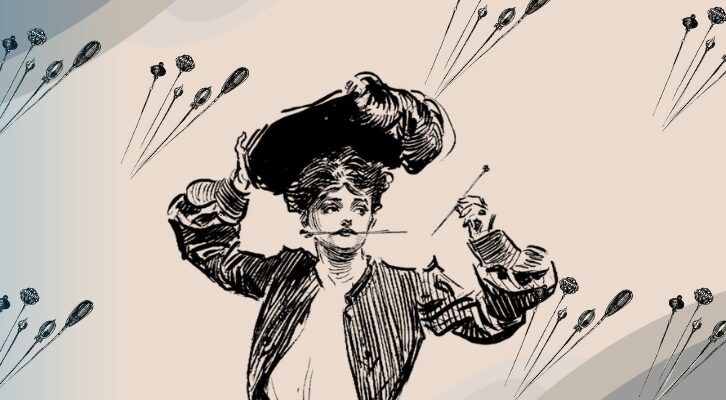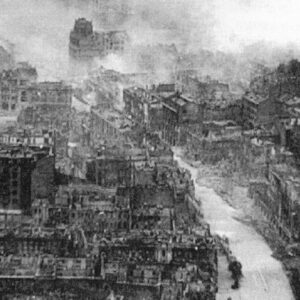
Is This the First-Ever English Language Review of László Krasznahorkai?
Read Andrew Ervin’s January 2001 Take on “The Melancholy of Resistance”
My love of Hungarian literature began in 1994, when my college girlfriend moved to Budapest to study music at the Liszt Academy and I followed her a few months later. We planned to stay for nine months, the maximum length of a return ticket at that time, and ended up staying for close to five years. While there, I contributed to two English-language newspapers and eventually took a job in the nascent Internet industry.
Upon our return to the States, I started freelancing for the Philadelphia City Paper and eventually the Inquirer and New York Times Book Review. One of my early assignments was a review of László Krasznahorkai’s first novel to be published in the US, The Melancholy of Resistance. (My editor at the City Paper was almost certainly Sam Adams, now of Slate fame. He’s always had excellent taste.) My review appeared in January 2001 and while I can’t say for certain, there’s a decent chance it was the first American write-up of Krasznahorkai. [Ed. note: We haven’t been able to find any evidence to the contrary; New Directions published the hardcover of Melancholy in November 2000; James Wood would write about Melancholy a decade later in The New Yorker, an essay some cite as the dawn of the Krasznahorkai Era in America, such as it is.]
I’m glad to share that review here on the occasion of his Nobel Prize. It’s a joy to see Hungarian literature celebrated again on the world stage, even if that nation’s political scene leaves so much to be desired. The Hungarian people deserve better than the current regime. Don’t we all.
That girlfriend and I are married and, all these years later, we still speak Hungarian when we don’t want others to know what we’re saying. And fast forwarding to 2015, she and I met—or more likely accosted—Krasznahorkai at the Brooklyn Book Festival. I was there to pedal my novel Burning Down George Orwell’s House and he was loitering around the New Directions table. I bought a copy of Seiobo There Below and asked him in Hungarian to sign it. He very politely responded in English and inscribed it to my wife and me, misspelling her name. She doesn’t seem to mind.
–Andrew Ervin, October 9, 2025
________________________________
Hungary For More
Let The Melancholy of Resistance Be Your Introduction to Hungarian Literature
Philadelphia City Paper, January 18-25, 2001
Hungary doesn’t have the same reputation for literature that it does for, say, classical music or wine or pornography. That’s because the native language is among the most unique and inaccessible in the world. How many Finno-Ugric languages can you name? How many Hungarian authors?
In the States, we’re far more familiar with the works of Bela Lugosi and Zsa Zsa Gabor than Endre Ady and Dezső Kosztolányi. As for more contemporary Hungarian writers go, few have been translated and even fewer have received any sort of exposure here in the New World. The Two Peters, Nadas and Esterházy, make a small splash every couple of years when something new sneaks into English, but Miklós Mészöly, Lajos Grendel and Tibor Déry represent a truly lost generation, at least to us. The publication of László Krasznahorkai’s The Melancholy of Resistance can change all that. It’s one Hungarian book well deserving of a place on every reading list and within every new year’s resolution.
Melancholy originally appeared in Hungary in 1989, but like the Magyar countryside itself, the book maintains a truly timeless quality. Krasznahorkai is stingy with the details of the setting; only a few clues (a red star on a toy soldier, “all those shiny Mercedes”) place the book in the waning years of the Russian occupation. Otherwise, it could have just as easily taken place a hundred years ago. The action, for lack of a better word, takes place in a small, rural village near the Hungarian-Rumanian border.
The book begins by exploding the myth that, if nothing else, at least the Soviets made the trains run on time. From there, Krasznahorkai dismantles many of the falsities that had seeped down from the official propagandists into the collective psyche of the proletariat. A traveling circus comes to town, boasting the remains of the largest whale in the entire world. The enormous dead beast being dragged from city to city serves as a blank metaphor. The author leaves the story open-ended enough that every reader can apply his or her own interpretation. As interest in the circus swells, so do the conspiracies. The carneys have nefarious intentions, or so some locals believe, which gives them an excuse for their eccentric behavior.
As in William Gaddis’ classic novel JR, the book’s narrative voice and focus change without warning, shifting from character to character, occasionally in midsentence. Krasznahorkai flirts with surrealism,but without ever consummating the relationship. His style is dense, and the story meanders at the pace of social change, gaining speed only by force of its own gravity. Each paragraph runs on uninterrupted for dozens of pages, resisting abbreviation or quotation.
The lively translation by George Szirtes maintains the weighty, forward momentum, and his rich word choices make you want to read slowly. The language, fully charged, is something to savor. The winding pace roils with meaning, metaphor and allusion, as if the story is going to burst at the seams. A kind of breathlessness overtakes the reader.
Part of the fun of reading Cold War literature derives from uncovering the historical ironies beyond the author’s line of vision at the time of writing. We have an entirely different perspective now from which to impose meaning on the open-ended metaphors. lf Krasznahorkai knew then what we know now, we’d have a much different book on our hands. As it stands, it’s a perfect snapshot of a not-too-distant past and it definitely withstands the dual-headed test of time and translation. Does the dead whale represent God? Mother Russia? Hungary’s hopes of independence? Every reader must answer these questions for himself.
Do yourself and ten million Hungarians a favor. Don’t allow the brilliant work of László Krasznahorkai to remain in obscurity. Put this newspaper down, brave the cold and go buy a copy of The Melancholy of Resistance. Make no mistake: it’s a difficult book, but a vastly rewarding one.
–Andrew Ervin, January, 2001
Andrew Ervin
Andrew Ervin is the author of two works of fiction: Extraordinary Renditions and Burning Down George Orwell’s House. His most recent book is Bit By Bit: How Video Games Transformed Our World. He lives in Philadelphia.



















